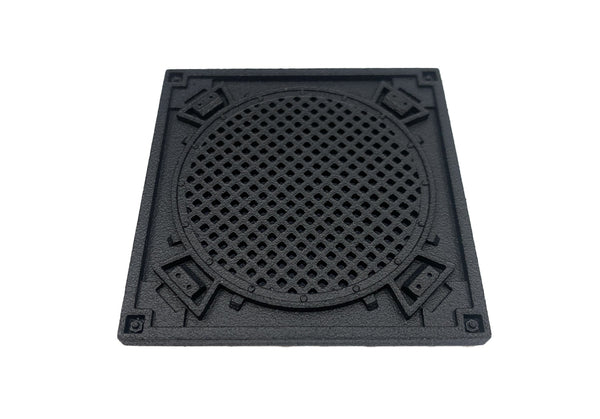AK Interactive - WWI British Uniforms
AK03080
Sold Out
This paint set contains three basic khaki shades designed to paint uniforms worn by British troops during WWI. These colours were also common in British uniforms of the WWII era.
The word 'khaki' ('dust-colored', Hindi) came to English from British India. Uniforms of khaki colour were first introduced in 1848 by the Corps of Guides which was part of the British Indian Army. Later, khaki uniforms were used by the British Empire in several colonial conflicts, such as the Expedition to Abyssinia in 1867 and the Mahdist War in 1881. In 1902, after the Second Boer War, khaki was accepted as the colour of the continental British Service Dress.
Unlike traditional grey and red costumes, the khaki uniform allowed troops to remain inconspicuous in the battlefield. It was widely used by British forces throughout the two World Wars, however today it's worn only during official occasions and ceremonies.
Includes:
AK3081 WWI British Uniform Base
AK3082 WWI British Uniform Light
AK3083 WWI British Uniform Shadow
Related Items
Resin Figure - USMC Scout Sniper (Vietnam)
£20.00 GBP
Available now!
1:35 or 1:24 Resin Figure - USMC Scout Sniper (Vietnam)
US Marine Corps infantrymen and reconnaissance Marines graduated from the US Marine Corps Scout Sniper School are known as Scout Snipers. In order to get this designation, the snipers must be conferred the rank of Lance Corporal, be selected to enter the scout-sniper platoon, and finish a special training course.
The main skills of a USMC Scout Sniper include fieldcraft, marksmanship and map-reading. The primary battlefield role of the sniper is to support the infantry battalion by executing aimed fire on selected targets as well as to perform reconnaissance and surveillance tasks.
The kit is based on a photo of Lance Corporal Dalton Gunderson 3rd Marine Division scanning the area for VC snipers with a Winchester Model 70 during Operation Virginia in 1966. This picture is often misattributed as being Carlos Hathcock, a legendary sniper of the US Marine Corps. During the Vietnam War, Hathcock killed at least 93 Vietnamese soldiers. At that time an officer had to witness the kills to confirm them. That made the confirmation difficult as officers could not be present every time a sniper shot the enemy. Hathcock asserted that he had killed over 300 men in Vietnam. Further details on the original photograph: “I was a young scout sniper when I met Dalton. He was a humble professional as you would imagine. I have this picture framed and he said ‘hey that’s me’ and laughed. I asked him what the story was behind it and he said that everytime they left the wire there was a dog that would compromise them and alert the enemy that there was a patrol leaving. He was aggravated and finally decided to deal with it, when a reporter asked him to take the picture.”
The kit includes one unpainted resin figure of an American USMC sniper and a Winchester Model 70 sporting rifle (unofficially issued in Vietnam and used by Hathcock and others during his first tour).
Soviet Sniper WW2 1/16th scale
£45.00 GBP
Highly detailed 1/16th or 120mm scale miniature, capturing the uniform and equipment of a WW2 Soviet Sniper. The kit comes with three head configuration options, fur hat with ear flaps known as the 'Ushanka', a head with helmet (2 parts) and a head with a cap known as the 'Pilotka'.
This is ideal for a diorama or bust depicting Soviet Snipers such as Vasily Grigoryevich Zaitsev. Between 10 October 1942 and 17 December 1942, during the Battle of Stalingrad, he killed 225 enemy soldiers. Zaitsev became a celebrated figure during the war and later a Hero of the Soviet Union, and he remains lauded for his skills as a sniper.
Operation Frankton RMBPD Set - WWII Cockle Canoe + Royal Marines
£45.00 GBP
1:35 - Major Herbert George "Blondie" Hasler - Resin kit
Herbert George "Blondie" Hasler was a Lieutenant Colonel of the Royal Marines. In 1942, a 28-year-old Hasler planned and led Operation Frankton. The operation was a commando raid on Axis shipping in the French port of Bordeaux occupied by the Germans. The mission was to attach mines to the hulls of German cargo ships. Three of the five canoes were lost on the way to the port. The surviving crewmen including Hasler reached the port successfully, placed the mines and managed to drown four cargo ships. They then walked 100 miles to a French village where they met with members of the Resistance and started their journey back to England through Spain and Gibraltar. For this operation Hasler was awarded the Distinguished Service Order by King George VI.
One kayak was damaged while being deployed from the submarine, and it and its crew therefore could not take part in the mission. Only two of the 10 men who launched from the submarine survived the raid: Hasler, and his number two in the kayak, Bill Sparks. Of the other eight, six were executed by the Germans and two died from hypothermia.
This product is available in two scales, 1:35 and 1:24 and was painstakingly designed from scratch as a digital model.
The kit includes: 2 x miniatures (Blondie Hasler and Bill Sparks) in their folding Cockle Canoe named 'Catfish' made by Campaign Models (UK).
Now available, while stocks last.
Miniature Diorama Display Base
£9.50 GBP
This highly detailed Diorama base is ideal for mounting one or two figures on display. Small enough to be displayed easily, big enough to provide enough space to set the scene. More styles coming very soon!
Dimensions: 58mm x 58mm x 4mm


















